Architect, interior designer, writer, and educator Frank Lincoln Wright developed an organic and distinctly American style. He was possibly the most influential American architect of the 20th century.
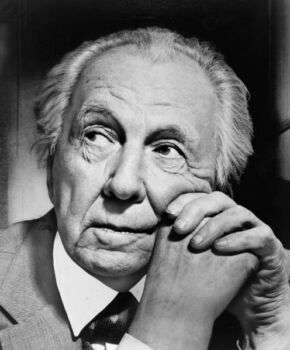
Image source:https://en.wikipedia.org/wiki/Frank_Lloyd_Wright#/media/File:Frank_Lloyd_Wright_portrait.jpg
Nurturing His Passion
Frank Lloyd Wright was born on June 8, 1867, in Wisconsin, to a family of Unitarian Welsh preachers. His mother brought him up following the principles of Friedrich Froebel, in which the concept of “Spielgabe” (translated as “gifts of play”) plays an important role. Spheres, cubes, cylinders and other primitive solids made from various materials, such as yarn or wood, can be manipulated and assembled in endless variations, which would capture children’s imagination.
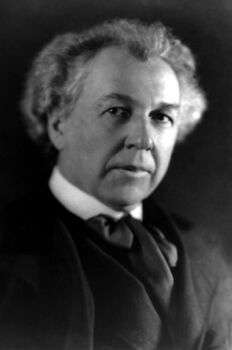
Image source: https://en.wikipedia.org/wiki/Frank_Lloyd_Wright#/media/File:Frank_Lloyd_Wright_LC-USZ62-36384.jpg
About His Career

Image source: https://search.creativecommons.org/photos/bf0c12dc-205f-4f47-871d-d3a55d166baf by Teemu008
After enrolling as a student at the Wisconsin Faculty of Engineering, which he later left, he started as an apprentice in two important studies. First, with J.L. Silsby and then with the Chicago office of Dankmar Adler and Louis Henry Sullivan, the pioneers of modern American architecture. He stayed there for about six years, from 1887 to 1893, devoting himself primarily to designing single-family homes, while Adler and Sullivan built skyscrapers and commercial buildings.
Wright was greatly influenced by Sullivan, whose motto was “form follows function” and rejected the more florid European styles, in favor of a purer aesthetic. Further, Wright followed his ideas and developed them into a unique brand of modern American architecture.
Later, Wright founded his firm and employed a style that became known as the Prairie School. Throughout his career, he was the creator and master of organic architecture, with was the harmony between human constructions and the inhabitants and its natural surroundings. Additionally, the audacity and fruitfulness of his process and his mastery of space are probably his greatest achievements.

Image source: https://search.creativecommons.org/photos/68f3f1e8-fdc7-4590-9cd5-e383aeafd3d0 by paularps
His Major Works
- Winslow House (1893) in Chicago, USA
- Unity Temple (1906-1907) in Chicago, USA
- Robie House (1908-1910) in Chicago, USA
- Midway Gardens (1913-1914) in Chicago, USA
- Imperial Hotel (1916-1922) in Tokyo, Japan
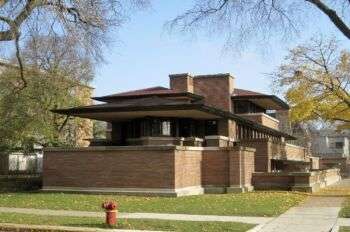
Image source: https://search.creativecommons.org/photos/da080673-ce6b-4c57-a3e8-ccf4697f9be9 by Teemu008
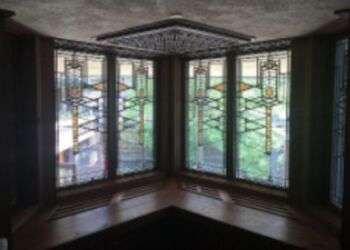
Image source: https://search.creativecommons.org/photos/669ce0f8-6280-4a59-9900-df20932d8df9 by Jules Antonio
- Ennis House (1920-1924) in Los Angeles, USA
- Kaufmann House or Fallingwater House (1932-1936) Pittsburg, USA
- Johnson Wax Headquarters (1936-1939) in Racine, USA
- Guggenheim Museum (1949-1959) in New York City, USA
- Norman Lykes house (1959)in Phoenix, USA
Perhaps the most famous example of Wright’s daring design philosophy was Fallingwater House, which Wright designed to hover over a waterfall.

Image source:https://search.creativecommons.org/photos/08cc508e-7a20-4975-9db0-68024386c100 by brdonovan

Image source: https://search.creativecommons.org/photos/aaff089a-4c7c-45c4-978f-fa3f371192d8 by focusc
About His Style
Frank Lloyd Wright and his unique interpretation of design made him one of the greatest architects of all time. Further, he perfected a distinctly American style that emphasized simplicity and natural beauty in contrast to the intricate and ornate constructs that prevailed in Europe. With apparently endless energy and tenacity, Wright designed over 1,100 buildings in his lifetime, nearly a third of which in the past decade.

Image source:https://search.creativecommons.org/photos/1f568b15-dcf3-476e-8907-ed82b3bc3909 by Bernt Rostad
Wright was a pioneer and a highly productive creator. Throughout his career, he retained the use of ornamental detail, earthy colors, and rich textures and effects. His sensible use of materials helped to control and perfect his dynamic expression of space, opening a new era in American architecture. Too impetuous to be contained, his works would go on to touch Europe and, in later years, Japan.

Image source: https://search.creativecommons.org/photos/0ddfe609-1990-4e5f-8dc0-80cd15203fbe by pom’.
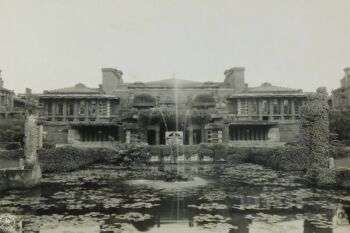
Image source: https://search.creativecommons.org/photos/95506fda-12d5-40d7-95c4-53ff3da18757 by army.arch
Info sources:
www.britannica.com www.biography.com
For more references, please also visit: www.jbdesign.it/idesignpro
